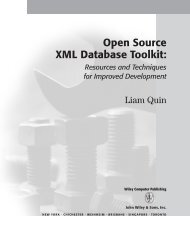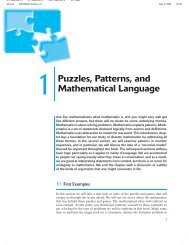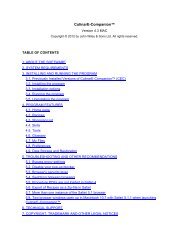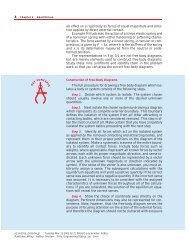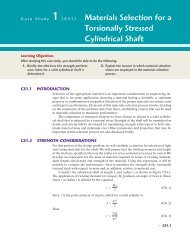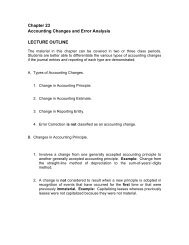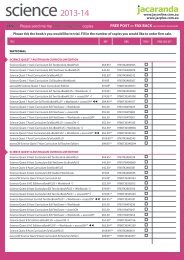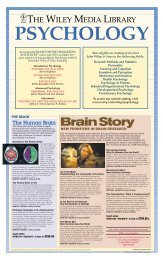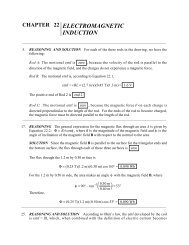Chapter Two - Wiley
Chapter Two - Wiley
Chapter Two - Wiley
Create successful ePaper yourself
Turn your PDF publications into a flip-book with our unique Google optimized e-Paper software.
8956d_ch02_100 10/6/03 3:54 PM Page 100 mac76 mac76:385_reb:<br />
100 CHAPTER 2 A Further Look at Financial Statements<br />
COMMUNICATION ACTIVITY<br />
BYP2-9 S.B. Barrett is the chief executive officer of Tomorrow’s Products. Barrett is an<br />
expert engineer but a novice in accounting.<br />
Instructions<br />
Write a letter to S.B. Barrett that explains (a) the three main types of ratios; (b) examples<br />
of each, how they are calculated, and what they measure; and (c) the bases for comparison<br />
in analyzing Tomorrow’s Products’ financial statements.<br />
ETHICS CASE<br />
BYP2-10 A May 20, 2002, Business Week story by Stanley Holmes and Mike France<br />
entitled “Boeing’s Secret” discusses issues surrounding the timing of the disclosure of<br />
information at the giant airplane manufacturer. To summarize, on December 11, 1996,<br />
Boeing closed a giant deal to acquire another manufacturer, McDonnell Douglas. Boeing<br />
paid for the acquisition by issuing shares of its own stock to the stockholders of<br />
McDonnell Douglas. In order for the deal not to be revoked, the value of Boeing’s stock<br />
could not decline below a certain level for a number of months after the deal.<br />
The article suggests that during the first half of 1997 Boeing suffered significant cost<br />
overruns because of severe inefficiencies in its production methods. Had these problems<br />
been disclosed in the quarterly financial statements during the first and second quarter<br />
of 1997, the company’s stock most likely would have plummeted, and the deal would have<br />
been revoked. Company managers spent considerable time debating when the bad news<br />
should be disclosed. One public relations manager suggested that the company’s problems<br />
be revealed on the date of either Princess Diana’s or Mother Teresa’s funeral, in the<br />
hope that it would be lost among those big stories that day. Instead, the company waited<br />
until October 22 of that year to announce a $2.6 billion write-off due to cost overruns.<br />
Within one week the company’s stock price had fallen 20%, but by this time the Mc-<br />
Donnell Douglas deal could not be reversed.<br />
Instructions<br />
Answer the following questions. Although it is not required in order to answer the questions,<br />
you may want to read the Business Week article.<br />
(a) Who are the stakeholders in this situation?<br />
(b) What are the ethical issues?<br />
(c) What assumptions or principles of accounting are relevant to this case?<br />
(d) Do you think it is ethical to try to “time” the release of a story so as to diminish its<br />
effect?<br />
(e) What would you have done if you were the chief executive officer of Boeing?<br />
(f) Boeing’s top management maintains that it did not have an obligation to reveal its<br />
problems during the first half of 1997, and that it wouldn’t do anything differently<br />
today. What implications does this have for investors and analysts who follow Boeing’s<br />
stock?<br />
Answers to Self-Study Questions<br />
1. a 2. a 3. c 4. c 5. c 6. d 7. a 8. a 9. a 10. c 11. b<br />
Answer to Tootsie Roll Review It Question 3, p. 62<br />
Tootsie Roll’s largest current asset at December 31, 2002, was cash and cash equivalents,<br />
at $105,507,000.<br />
Remember to go back to the Navigator box on the chapter-opening page<br />
■✓ and check off your completed work.



